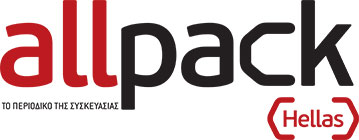Decline in monomer costs puts polymer prices under pressure / Supply abundant, demand scarce / Year essentially over across all standard grades
PE: The reduction of EUR 45/t in the monomer contract put pressure on polymer prices in Western Europe. The fact that the supply situation improved again meant that the recent significant price increases turned round, and in many cases quotations fell by more than the monomer reduction. On top of that, converters were often able to obtain additional decreases for orders scheduled for delivery in December. Significant impulses from the customer industries were not to be expected anyway. For this reason, European converters were grateful if incoming orders remained at their previous month’s level. The first moves to increase stocks were also made under favourable conditions, at least for LDPE. The slump in Western European polymer prices is likely to continue after the latest fall in the cost of ethylene (down EUR 30/t). In view of the improved supply situation and the short production month, the decline could well be larger than the fall in the cost of the monomer. Ordering activity is set to receive an additional damper through the Christmas break announced by many companies. In the meantime, there are reports of annual negotiations being delayed in many instances due to several converters finding it difficult to come up with a forecast of the volumes they will need in the coming year. The ordering behaviour by the customer industries is still a “black box”. In addition, most converters expect the supply situation in Europe to remain good in the next few months, and therefore feel they can meet their needs from the spot markets, and thus be able to obtain a better margin from their business.
PP: The EUR 40/t drop in the November C3 reference contract set the pattern: on the back of this, polypropylene prices in Europe gave way and put paid to the short-lived upward momentum of the two preceding months. At first, producers tried to concede less than their price relief would warrant, but due to the soft demand enjoyed scant lasting success. Especially in the month’s second half, demand softened further, leading for the most part to more substantial concessions. With some certainty, the improved supply situation on the European market played a role. Existing bottlenecks were dissolved, due in major part to aggressively priced imports from the US and the Middle East. Another contributing factor was that demand was stuck at a low level, as many converters were loath to take on additional inventory so close to the end of-the-year accounting time. At the same time, some buyers are planning longer than usual breaks over the holidays. Year-end negotiations for 2024 supply contracts are proceeding sluggishly. As no one knows for sure how the market will develop, many converters are reluctant to seal deals. It is also possible that there will be fewer contracts agreed than usual, as many players may want to buy more spot material than usual.
PVC: The brief upward trend of the previous two months was reversed again and European PVC prices fell in November. While offers at the start of the month included a pro-rata cost reduction for the C2 reference (down EUR 45/t), producers had to grant greater decreases in the course of the month if they wanted to sell volumes. Output from European production plants is running at an almost historically low level. Producers are looking at the profitability of their plants even more closely than usual, including in the light of the very weak level of demand. They then take further action, as was recently demonstrated when a precedent was set in Western Europe with the shutdown of an upstream plant. As far as the short-term outlook for December is concerned, prices can be expected to fall further. The ethylene contract was fixed EUR 30/t lower at EUR 1,185/t. Demand, which is already weak, will be further dampened by the reduced number of production days due to the upcoming Christmas break. The anti-dumping proceedings initiated at the end of November could give European producers a boost in the annual contract negotiations at least. With punitive duties on imports from the US and Egypt, some see no need for significant price concessions.
Styrenics: November broke the three-month rise in styrenics as Western European prices turned lower. A significant decline in the styrene reference (down EUR 149/t) provoked triple-digit discounts for polystyrene and EPS, while the price declines for ABS grades were somewhat cushioned by increases in quotations for other cost components (butadiene up EUR 15/t, ACN up EUR 27/t). Across the board, European producers tried to retain a share of the cost reductions – especially as previous increases were often not passed on in full, which stressed already shaken margins. Some suppliers maintained this stance until the end, while others passed on the reductions to boost sales, or in some cases even granted more generous discounts. Ordering remained low. Many processors have their sights set on the Christmas holiday period and the upcoming turn of the year, and due to balance sheet considerations they want to keep stocks as low as possible. This trend will probably also dominate purchasing in December, the shortness of which as a production month is putting further pressure on the volumes called, exacerbated by the fact that quite a few processors are planning longer manufacturing shutdowns during the holidays than usual due to weak demand. Against this backdrop, any further decline in prices is almost a side note. Styrenics prices are set to fall further after the styrene reference for December slumped again by triple digits (down EUR 116/t). The other composite costs for ABS also eased (butadiene down EUR 10/t, ACN down EUR 28/t). “The market is all over for this year”, one participant told PIE.
PET: Crisis is the new normal – an apt summary of the situation in the European PET market in November 2023. The sales misery that seems to have lasted almost forever has eroded PET production in Europe, which is the most expensive in the world. And the first chunks have now fallen off of the cliff into the sea. At the start of the month, initial slight increases still came about on account of the uncertainty triggered by the volatility at JBF in Belgium coupled with the provisional punitive tariffs imposed on Chinese imports by the EU. It rapidly became clear, however, that apart from other producers in the EU, a sufficient number of supplier countries outside of Europe are also more than willing and able to make up the shortfall of Chinese material – and naturally at attractive prices too. This meant that the absence of JBF did not really affect the market. As of the second third of the month, the pressure of the lower PX reference was then felt and prices declined noticeably. Overall, however, the reductions remained moderate, since the severity of the situation left European producers with little room to manoeuvre. As in the previous month, the PX reference for November has still not been fixed at the end of the month, a typical feature of these uncertain and even crisis-like times. The market remains weak. In Belgium, JBF is now also likely to shut down its second line. Despite this, supply remains more than adequate. Imports are still available and demand is at rock bottom. In December, all sides would undoubtedly be happy with a quiet month.
For more than 35 years, PIE has been an invaluable source of information for European plastics industry decision makers – a quick, yet in-depth look at the development of plastics markets and polymer prices. Available online 24/7 and as a printed newsletter twice a month. To read the entire report, go to www.pieweb.com and sign up for a 48-hour free trial!

































